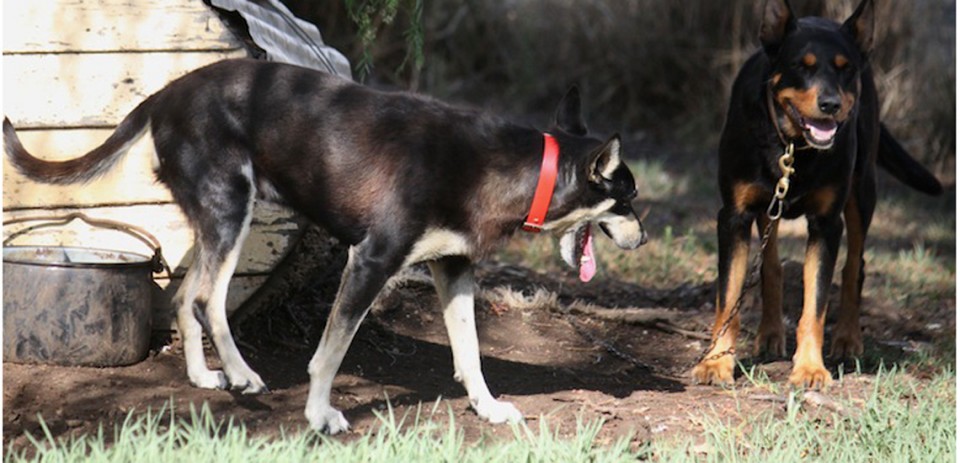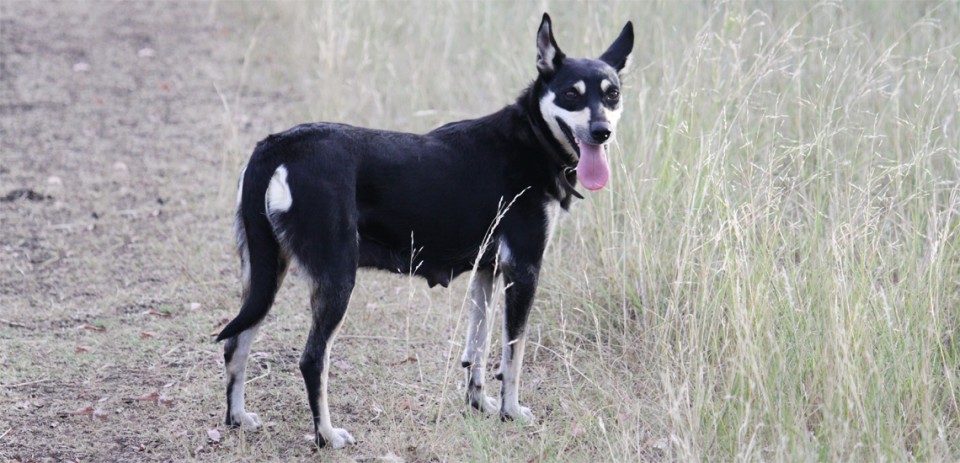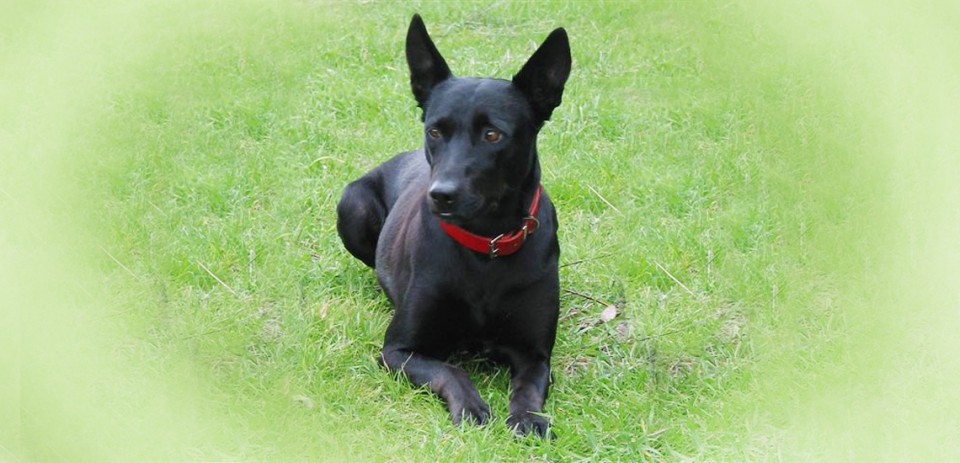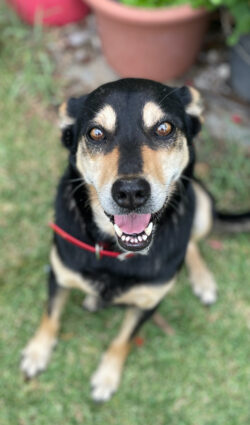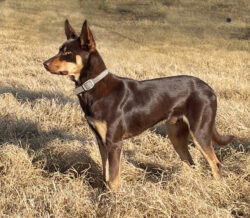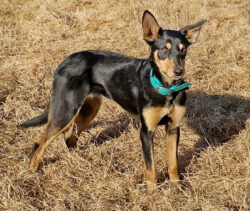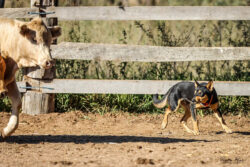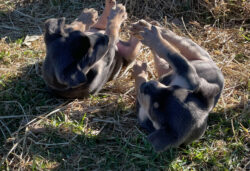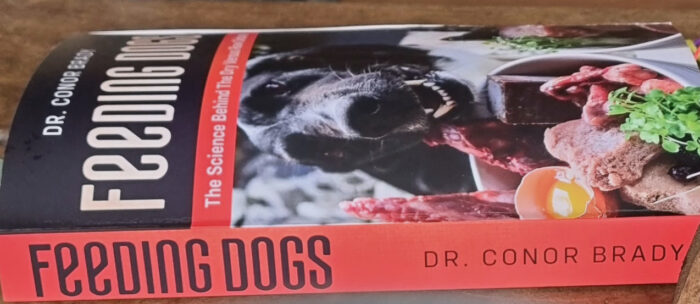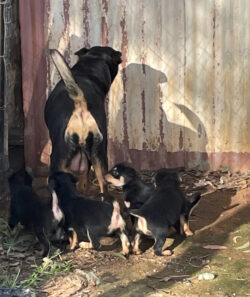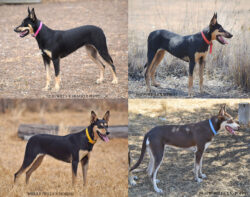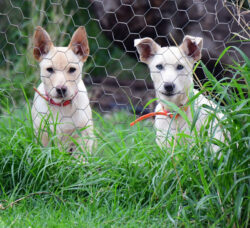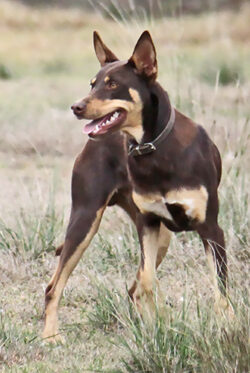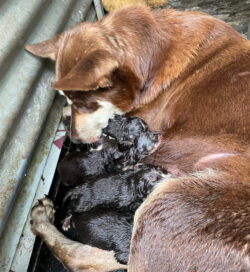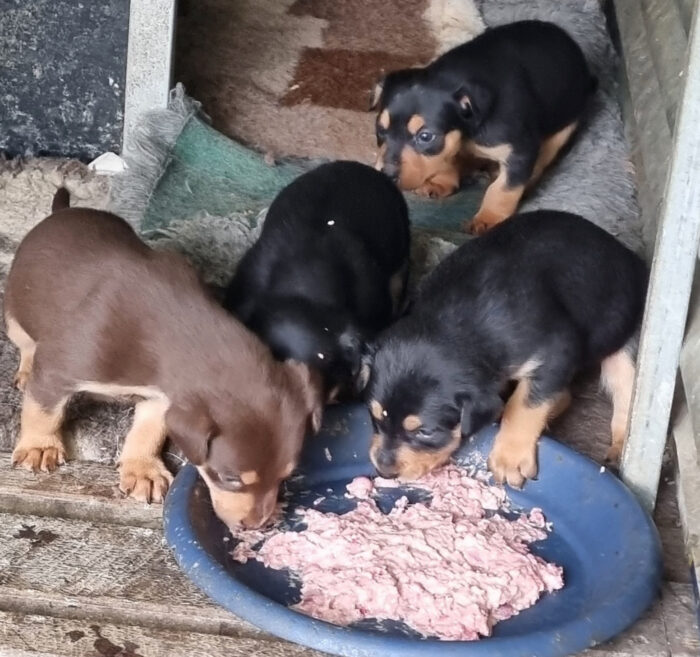Health info….feeding/nutrition
There’s been heaps more “Grain Free” kibble available in the last few years and many people think this is a healthier option, disregarding the obvious fact that dogs need raw meaty bones to be really healthy! This is some info I collated from a recent long article which I thought was really interesting.
Research in the USA has found an increase in heart disease in dogs fed a grain free diet…in fact 91% of 500 cases investigated were on grain free, and 93% of those feeds contained peas and lentils.
Some breeds are more susceptible to a lack of taurine, found in meat, and the peas and lentils don’t contain any. Dogs can also manufacture taurine from amino acids like methionine and cysteine.
BUT pulses are high in protein and using them in kibble means less meat is needed to keep up the percentage of protein advertised, and of course they cost less.
Pet food is made by extrusion, heat and pressure, to give its kibble form. At least 30% carbohydrate content is needed for this process…and carbs of all sorts contain no taurine.
The healthiest diet is one based on animal proteins and poultry, fish and offal are the best. Hoofed animals, eggs and dairy contain less taurine.
Dog food with poor quality proteins will add synthetic amino acids to compensate, look on the ingredient list…DL-Methionine, L-Lysine, Taurine, L-Carnitine are all ‘fake’ ones made in a lab, probably in China!
Peas, lentils, legumes, sweet potato, and other dehydrated potatoes are a convenient way for kibble makers to replace animal proteins with cheap plant proteins in their dry food. These are also high in Phytic acid which can limit the absorption of other nutrients like iron, calcium and phosphorus.
So please don’t think “grain free” is much better, as many seem to!
What a difference a month makes!
This little pup came to me at 5 1/2 wks in lieu of a service fee. She very nearly died…insufficient milk from the bitch, chemical wormer, canned puppy food….She developed an allergy to grass, got a huge rash and lost most of her hair.
Shown in the first photo with a half brother the same age from my Quizz litter, and again below (with pink collar) with the same pup. I gave her pet mince and some freeze dried tripe to get her going.
Before continuing remember that ONLY RAW BONES SHOULD BE FED….NOT COOKED as they can splinter, weight bearing leg bones can also splinter. Here’s a bit copied from Dogs Naturally:
It’s believed that a raw food diet contains natural enzymes that help resist bacterial plaque. Many veterinarians and pet owners have seen healthier teeth and gums in dogs eating raw food diets and raw meaty bones.
Raw meaty bones provide an active chewing and gum cleaning advantage. In contrast, cooked bones are more brittle and can splinter when chewed. That’s why cooked bones come with the risk of damage to the tissues in the intestinal tract. Another concern about dogs chewing bones is the risk of damaged or broken teeth.
Larger, bulky objects aren’t chewed with the same angle and force on the large teeth at the back of the cheek and mouth compared to smaller and longer objects. In fact, common items known to break a dog’s teeth are nylon bones, cooked bones, antlers, hooves, and bully sticks. This is Heli showing off her lovely white healthy teeth.
YOU WILL GATHER THAT I’M PASSIONATE ABOUT REARING HEALTHY PUPS!
I’ll share a few things I’ve learned through referring my questions on canine nutrition to Marina Angel Smith… who has studied it in detail, and is also very skilled using herbs and natural therapies. Vet students study animal nutrition but it isn’t broken up into herbivores, carnivores and omnivores but treated as one subject; there is a huge difference in the digestion and diet of these groups of animals. Of course most vets are promoting dry foods in their practices(to their financial benefit, treating the resultant health problems). Pet food companies have so infiltrated the vet scene that in the States a text book on nutrition used in Vet. science courses is printed by one of them.
There’s a book by Dr Conor Brady called Feeding Dogs. Read it! You’ll be horrified. He also has a Facebook page called Dogs First which is updated regularly ….more below about his book.
April 2024.
I’ve just been reading an article by Dogs Naturally, based in America and it sent me off to find out what regulations we operate under in Australia. It was worse than I expected.
Another point to remember, AAFCO is a non-profit organization that sets standards for both animal feeds and pet foods in the United States. It has a number of members from the manufacturing companies. Because they have no such body many other countries inc. Australia accept their standards, some of which have been found incorrect. It has a lot of influence over other bodies in the USA. The book “Feeding Dogs” has a lot of well researched criticism of AAFCO and its bias towards kibble. e.g. this is the sort of test it approves:
**** For example, “adult maintenance” feeding trials for dogs must include a minimum of eight healthy dogs that are at least 1 year of age, and the trial must last 26 weeks.
Pet foods that pass the feeding trial requirements will have a label stating something like:
“Animal feeding tests using AAFCO procedures substantiate that (name of food) proves complete and balanced nutrition for (life stage).”**** Lots more about them further on
The second part of the text from: nutritionrvn.com is an evidence based pet nutrition blog and educational resource created by Animal Nutritionist and Veterinary Technician Specialist in Nutrition, Jessica. She shares her extensive knowledge in evidence based companion animal nutrition for the benefit of both pet owners and veterinary professionals.
From DogsNat: The FDA and each US State pet food regulatory authority allows condemned poultry and livestock animals, as well as non-slaughtered animals (that died prior to slaughter) to be processed into pet food with no warning or disclosure to pet owners. In April of 2019, the FDA CVM stated: “we do not believe that the use of diseased animals or animals that died otherwise than by slaughter to make animal food poses a safety concern and we intend to continue to exercise enforcement discretion.” (This includes euthanised animals..Jan)
Australian Pet food controls:
The regulations
In short, there are none. Pet food is self regulated, meaning it is up to the pet food company on what (if any) protocols they put in place, how they manufacture or formulate their food and what quality control is performed. Here in Australia, there’s no governing body overseeing pet food – compared to in the US where the FDA have some control over pet food, and can order recalls, perform investigations and assist in regulatory processes of ingredients and standards, in Australia there’s no such equivalent. Pet food companies can opt to become voluntary members of the Pet Food Industry Association of Australia (PFIAA) which means they must follow a set of Australian manufacturing standards – however it’s very important to remember that this is NOT enforced so if a company does not join PFIAA, there’s no obligation for them to follow the standards. And while it is admirable if the company is a member, it isn’t a legal requirement to be a member.
********************** *********************** ***********************
I know feeding raw food on farm can be time consuming and sometimes impossible, and that working dogs are considered ‘ better’ fed these days because of the convenience of dry food….BUT…..the working lifetime of dogs has been considerably reduced by grain based diets which cause arthritis, skin problems, cancers, kidney troubles etc from about 8 years of age. Marina’s dogs that have been on organic raw all their lives have consistently lived to 20 and worked to 16-18 years. Try to give your dogs at least a few raw feeds a week and don’t be misled by the proliferation of GRAIN FREE foods popping up everywhere. Be aware that fillers like potatoes, pulses, etc. are all carbs and just as bad as grains in many cases.
The first item on the ingredient list on the bag of food is the main ingredient; standards for dry food are very slack because reps of the manufacturing companies are setting the requirements so they make more profit. I looked at a new brand today, lovely pics on the bag, grain free etc. The first ingredient was chicken meal; this comes from the bits discarded elsewhere and can include feathers. You hardly ever see MEAT listed except on raw diets. Of course cooking to high temps destroys much of the good anyway. Don’t be discouraged by the those who go overboard trying to balance the raw diet to a perfect %age of fat, protein etc. Remember how dogs live in the wild, they never got dinners of 8 different ingredients in perfect proportions!
Many ‘old timers’ remember dogs who regularly lived to 15 and over, fed mainly on rabbits, ‘killer sheep’ and roos…. even a bit of pollard mixed with house scraps when there was nothing else. These dogs often looked pretty lean but lived long and useful lives. Liver from farm kills was a no no due to hydatid infection and we were told to cook it first, a rather disgusting job!
To really give your dog the rich benefits of liver, he should eat it raw. Cooking kills a lot of nutrients. In 2007, a USDA paper showed that cooking liver caused the loss of …
- 40% of iron, magnesium and vitamin A
- 55% of niacin and B6
- 35% of folate
- 30% of phosphorus
- 25% of copper and vitamin C
- It has great benefits. I feed a butcher’s pet mince which contains quite a lot, they also do a more expensive one with a higher %ge of offal and organs which is fed more sparingly.
CALCIUM in dry foods can’t be absorbed by a dog and the body puts out its own stores until it runs out. The only calcium with correct magnesium and potassium balance so dogs can absorb it is in bones…not surprising really! I bought a pup that had been fed “ad lib” grain free puppy food for the first 8 weeks and she’s at present on kennel rest with a damaged hock from a bump in the run. Now I’ve had well over 1000 pups hooning around in the same run and this has never happened before…no leg injuries over 20 years. I suspect lack of calcium. It’s very sad because people spend a fortune thinking they’re doing the best for their pups. Lots more about Calcium if you keep reading!
Be careful feeding roo meat and dry food, it’s not a good mix. Roo meat is normally very good for dogs(and contains a lot of the good Omega oils) but because of the high nitrogen fixation takes a lot of energy to digest. If fed with kibble to pregnant/whelping bitches this can result in milk fever and fitting, because of calcium being leached from their systems. The only way to remedy this is with bone meal or bones, not calcium syrup which can’t be absorbed by dogs. Often people add the syrup to pup food but they should be feeding them bones; small pups can eat minced chicken frames from about 3 weeks.
My feeding is by no means perfect, but after reading a very well researched book that has recently been published I’d have to say just about anything within reason would be better than a solely dry food diet! I have many puppy buyers who are replacing an old dog and they often tell me its age. I always ask what this old timer’s been fed and without exception it’s had a few feeds of meaty bones, scraps etc. each week.
And the most interesting thing? The advice that all dry food is bad and don’t even think the more expensive ones are much better than the cheap ones! Comprehensive testing has shown this.
“Feeding Dogs” by Dr. Conor Brady, is a must read for anyone who cares about the health of their pet. He has researched the raw vs. dry food question to the best of his ability, but the extremely invasive influence of the big International pet food companies, eg. Mars, Nestle and Purina, has made the results of any trials comparing the two …well, a bit of a joke. In fact there has never been a well funded, professionally run trial that has assessed raw as opposed to dry food on a large scale. The closest is one in Belgium a long time ago.
These companies are so powerful, they have influenced the veterinary schools in many Universities in America, and have reps on AAFCO which sets the standards for pet food virtually world wide…. and are now buying up chains of Vet practices as with Greencross.
Most vets are not taught any basic canine nutrition during their course, rather are schooled to stock Hills Science Diet in their future clinics and often recommend against raw feeding simply through ignorance.
It goes without saying that the main aim of these huge multinationals is making the highest profit possible, and it also goes without saying that they are hardly likely to use healthy, fresh, expensive ingredients in these products. I knew the basics of Dr. Brady’s argument before starting his book because I have been taking advice from Marina for many years, but it still shocked me to the core. The heavy loading of the dry foods with cheap carbs from doubtful sources is at the basis of his findings; the lengths they go to in finding cheap proteins is just horrifying… dead cats and dogs that have been euthanised and meat from dead, dying and diseased animals that has to be made unfit for humans by spraying with carbolic acid and other approved nasties, but then considered OK for pets!
Dr. Brady also draws the comparison between human obesity and overweight pets both being caused by high carb diets.
Some perfectionists will be horrified that I don’t feed oysters, mushrooms, salmon, avocado, quail eggs, duck, chicken livers, baby spinach, green beans..etc. My adult dogs get boned out lamb flaps and briskets, chicken frames, a few eggs and pet mince containing various beef and lamb offal. They have access to fresh green grass and get the occasional hare off the side of the road for a bit of species appropriate food!
Our soils are rapidly being depleted of minerals with constant cropping, and we should be aware of this as it applies to our own diets as well as our dogs! Tests done in America over a 30 year period up until 1992 showed that beef contained: 20% less calcium, nearly 36% less iron, 16.7% less phosphorus, 100% less Vit.A and 52% less thiamine. Figures from an article in Dogs Naturally Magazine, and it has only become progressively worse since 1992. (Incidentally, this magazine is online and provides a lot of useful info.) I use Big Dog Boost to attempt to modify this depletion. All minerals and vitamins used in dry pet foods are made in China.
Nutrition and its effect on genetics
I’ve been told that poor feeding over generations can affect the health of pups born, and went hunting through available information to find out why. Dogs(and people) depend on healthy mitochondria, “they are the power houses of the cell providing the body with over 90% of the energy it needs to sustain life.” Every cell has masses of mitochondria.
Mitochondria take in sugars and proteins from the food we eat and produce energy called ATP that our bodies use to function properly. Mitochondrial disease is a debilitating and potentially fatal disease that reduces the ability of the mitochondria to produce this energy. When the mitochondria are not working properly, cells begin to die until eventually whole organ systems fail and life itself is compromised. They require the right amount of protein, fats, carbohydrates, vitamins and minerals to function properly. Imbalances can cause the build up of potentially dangerous by products which eventually compromise DNA function. When a cell is filled with defective mitochondria, not only does it become deprived of ATP, it also can accumulate a backlog of unused fuel molecules and oxygen, with potentially disastrous effects. ATP derived from mitochondria provides the main source of power for muscle cell contraction and nerve cell firing. So, muscle cells and nerve cells are especially sensitive to mitochondrial defects/mutations.
Mutations in either nuclear(cell) DNA (nDNA) or mitochondrial DNA (mtDNA) can cause mitochondrial disease.
Most nDNA (along with any mutations it has) is inherited in a Mendelian pattern, loosely meaning that one copy of each gene comes from each parent and it takes mutations in both copies of a gene to cause disease.
Unlike nDNA, mtDNA passes only from mother to child. That is because during conception, when the sperm fuses with the egg, the sperm’s mitochondria — and its mtDNA — are destroyed. Thus, mitochondrial diseases caused by mtDNA mutations are unique because they are inherited only from the mother.
Another unique feature of mtDNA diseases arises from the fact that a typical human cell — including the egg cell — contains only one nucleus but hundreds of mitochondria. A single cell can contain both mutant mitochondria and normal mitochondria, and the balance between the two will determine the cell’s health. This helps explain why the symptoms of mitochondrial disease can vary so much from person to person, even within the same family.
What are the symptoms of mitochondrial myopathies?
Muscular and neurological problems — such as muscle weakness, exercise intolerance, hearing loss, trouble with balance and coordination, seizures, and learning deficits — are common features of mitochondrial disease because muscle cells and nerve cells have especially high energy needs. Other frequent complications include impaired vision, heart defects, diabetes, stunted growth, allergies and systemic inflammation.
Do any of these ring a bell with symptoms related to very close inbreeding of dogs? Or to many common ailments dogs are presenting with? Or, indeed, with many of the huge avalanche of human illnesses presenting in recent decades led by obesity? The proliferation of fast food, sugary drinks, refined flour products, other carbs, etc. might just have something to do with it.
So it’s really obvious how vital a good diet is for healthy mitochondria, right? Not surprisingly, foods to be avoided include ones known to fuel cancer….. the perpetual pandemic, and the other ones, dementia/Alzheimers and diabetes have been linked also. I could possibly add autism, as nobody seems to know what causes it.
It’s only a short jump to the poor quality dry foods being marketed to feed dogs. I’ve written elsewhere about the benefits of a raw diet. Once again I mention Dr Conor Brady’s book “Feeding Dogs”.
And if you’re wondering what led me down this particular rabbit hole? If you feed a bitch a poor diet over many years it’s possible to compromise her mitochondria. If you then double up on the weakness and mate two of her pups by different sires? To my simple mind you’re doubling the possibility that those pups could also have ‘weakened’ mitochondria which could lead to muscle and nerve problems. The shortened life spans and multiple illnesses dogs are suffering more frequently…….?
And often the vets are recommending special dry foods to treat them, when more than likely the food is at least part of the problem.
A summary from Dogs Naturally:
Waste Buildup
Your dog’s cells are constantly working. Cells continually generate energy, transcribe DNA, transport molecules, make enzymes and divide. These functions all create waste products. Cells need to continually take out the trash or they become tiny junkyards.
Some of the waste is swept under the rugs or can’t be cleaned out at all. Over time, this waste builds up and starts to interfere with cell function.
DNA Damage And Mutations
Your dog’s DNA is bundled in chromosomes inside his cells. DNA carries your dog’s genetic information. It determines the size, shape and function of every cell … and this determines the size, shape and function of every dog.
Over time, DNA can change and mutate … especially in slowly dividing cells. DNA mutations cause premature aging. And older animals have cells with more mutations.
Genetics
Mothers can pass genetic mutations to their puppies. These mutations can predetermine how quickly the puppies age. If you want your dog to live a long life, you need to pick the right mother!
Aging in dogs
This article explains more simply the points made in the previous one…from Dogs Naturally.
|
|
|
|
The info below is from Dogs Naturally and Dr Ian Billinghurst
Phosphorus
Meat is very high in phosphorus and low in calcium. The main function of phosphorus is in forming bones and teeth.
It plays an important role in the body’s use of carbohydrates and fat as well as in synthesizing protein for the growth, maintenance and repair of cells and tissues.
Phosphorus is also crucial for the production of ATP, a molecule the body uses to store energy.
Phosphorus works with the B vitamins. It also helps with muscle contraction, kidney function, heartbeat regularity and nerve conduction.
Calcium
Bone is high in calcium and in phosporus.
According to Dr Ian Billinghurst (author of Give Your Dog a Bone and other well known books on canine nutrition), calcium’s role goes far beyond bone mineralization.
Dogs need a balance between the amount of phosphorus and calcium they get in their daily diets.
The ratio of calcium to phosphorus should be about 1:1, but preferably with slightly more calcium than phosphorus.
This is especially important in young, growing dogs, who need an adequate supply of raw meaty bones in their diet to provide a good balance of calcium and phosphorus (we’ll talk more about this later).
Feeding all-meat diets (which are are high in phosphorus and low in calcium) to young pups can cause skeletal problems.
According to the Merck Veterinary Manual, insufficient calcium or excess phosphorus can lower calcium absorption and result in irritability, hyperesthesia (oversensitivity to sensory stimuli), and loss of muscle tone.
Calcium deficiency can also cause skeletal demineralization, particularly of the pelvis and vertebrae.
Excess calcium can also interfere with normal healthy bone mineralization and growth, especially in young (under 1 year old) large and giant breed dogs. Large breeds fed excess calcium are more likely to suffer from developmental bone disease such as osteochondrosis (abnormal bone growth).
(NOTE: Still not sure about raw? Click Here to see what 5 dangerous ingredients are in your dog’s food — that AREN’T on the label!)
Balancing The Calcium:Phosphorus Ratio
It might seem daunting to calculate the calcium:phosphorus ratio in a home prepared raw diet for your dog … but it’s really not that complicated.
Bones are a safe source of dietary calcium and if dogs eat enough of them, the diet will be balanced without a lot of difficult calculations.
Dr Billinghurst explains:
Dr Billinghurst also says that adult dogs need less calcium and, as long as you’re feeding a raw diet with raw meaty bones, the adult dog’s body will absorb the calcium it needs and leave what it doesn’t in the intestines.
Overall, balancing calcium and phosphorus isn’t all that difficult, as long as dogs receive plenty of bone. In general, any bone content over 10% is plenty although you shouldn’t exceed 25% because dogs need other nutrients too.
HAMPL in Perth make a great herbal AB I always have on hand for both the dogs and myself.
McDowells Herbs are also very helpful and make some excellent herbal remedies. They have a consulting service. Herbs have been used for thousands of years and there’s a wealth of knowledge to tap into. They always work for me and my dogs.
Here is some very interesting info from Marina which she shared with the Group in WA she used to run. Incidentally, the same processes are pretty much the same in humans. Wonder why you see fat dogs with overweight owners?
Marina with Jesse(20 years old!) and Cash. Her expertise is invaluable, thanks Marina! I’ve avoided many expensive vet visits by asking her advice.
The link between Canine Nutrition, Behaviour and Training, written by Marina
When a dog’s diet is high in carbohydrates which convert to sugar (grains, starches such as potatoes, peas and sweet potatoes and simple sugars like Honey, Fruit and Fructose, and ALL cereals including Rice)these foods cause the sugar levels to rise in the body which causes insulin to be released to lower the sugar levels, then when the sugar levels drop Cortisol is released to help raise the sugar levels.
This process continues to cycle and affects Estrogen, Progesterone and Testosterone levels.
Also when Cortisol is repeatedly released in response to carbohydrates it competes with Progesterone for the same receptors and Cortisol wins the race every time. Progesterone is essential for fertility so bitches may begin to ovulate then stop.
Hormonal balance is also key to building strong joints especially through the growth period of a puppy.
Dogs need Cortisol in small amounts but when the adrenal glands over secrete it, the situation turns toxic as high Cortisol levels cause degenerative diseases and suppress the immune system leading to Pyometra in bitches; general infections anywhere in the body; allergies; thinning of the skin and coat; decreased muscle and bone mass and gastrointestinal ulcers.
High cortisol also also encourages the kidneys to excrete water producing the classic symptoms of increased thirst and urination and elevates blood sugar which can lead to diabetes.
If this doesn’t have a puppy or dog feeling bad enough? Add irritability and restlessness into the mix and the effect it has on drive, I have experienced too many dogs having very little drive until I’ve had them on a natural raw diet for 3-6 weeks depending on age and of course breed.
A dog with a belly full of carbohydrates and olfactory bulbs coated with trans fats isn’t as eager to work and doesn’t have the acute senses for drive and conditioning let alone the fact that Omega 3 Fatty acids (brain food) do not withstand cooking.
A dog can survive this way but not thrive, give it a try, all I’m asking is that you test the difference by trying a natural raw diet (eg Barf) for 6 weeks and see the difference.” End of article.
I recently wrote an article for an online magazine that is relevant here:
I have been feeding my dogs and pups a raw diet for many years, and can honestly say I have never had any of those on-going issues like itchy skin, bad anal glands, smelly breath, yellowy brown teeth, etc. that are so common these days….and of course my dogs aren’t fat. The diet I feed is by no means perfect, but after reading a very well researched book that has recently been published I’d have to say just about anything within reason would be better than a dry food diet!
The pups start at about three weeks of age on a mix that comprises 10 kg of minced chicken frames and legs, 3-4 cups of Diamotaceous Earth, 3-5L of kefir, 1/3 cup Omega oils and 1/3 cup Big Dog Boost immune booster. The bitches also get some of this mince for the 3 weeks prior to whelping and of course live very well while nursing, staying in good to forward condition. I give a little bit of Kiwi Peak air dried food as a meal topper, it keeps a wonderful shine on their coats.
As the pups get older(about 6-8 weeks) they also get chicken wings, boned lamb brisket bits and pieces of chopped up chicken frames. I don’t feed necks because they swallow them whole and it freaks me out, although I’ve never had any problems! It’s quite surprising how early pups can cope with soft bones. I sometimes chop the skinny end off the flaps and they get them too.
The dogs get lamb bones every day. DE is a natural wormer and great when I am using the grassed pup yards without long breaks(1 tsp/day for pups, a soup spoon for adults….can be fed every day for a week as a wormer mixed with the mince for adults) It is quite hard to feed kelpies when they are not getting a lot of work because no matter how much they exercise in the run, it is the mental energy generated when working that really keeps them fit. I monitor them daily (and automatically, after doing it for so long) adjusting their food to their condition; it is quite easy to fine tune weight by this method.
I reared about one hundred pups last year, too many for sure and due to large litter sizes and no losses. They were fat, shiny, healthy, happy puppies. Maybe they would have grown faster on dry puppy food, in fact I noticed when helping a friend tattoo her pups that they were bigger than mine at the same age.
I’ve seen an older pup go away for 3 weeks’ training and come back at least 3”(9cm?) taller when changed to dry food. My dogs just grow out a bit slower, which I think is good for their joints. They finish up nicely grown, healthy adults who usually live to twelve plus years without arthritis. If fed an optimum, organic diet kelpies will live to over twenty and work well into their teens, but I simply can’t afford to do that.
I would strongly urge you all to consider feeding at least half raw to your dogs. I speak to a lot of dog owners and can promise you that those who have lost their old favourite at a very good age have always fed some raw bones.
For just one puppy you might find it easier to use the frozen patties from BARF or Big DOG and give bones as well, but when you buy a pup try to keep it on the same diet the breeder has been using and change over slowly.
This is when pups are at the most stressful time of their lives. Gunky eyes are a sign of their immune system working hard to keep up with the changes(wipe with Colloidal Silver or warm salty water). Kefir is a great source of probiotics and great for gut health, I consider it very important when raising healthy pups.
Good luck with your next baby!
